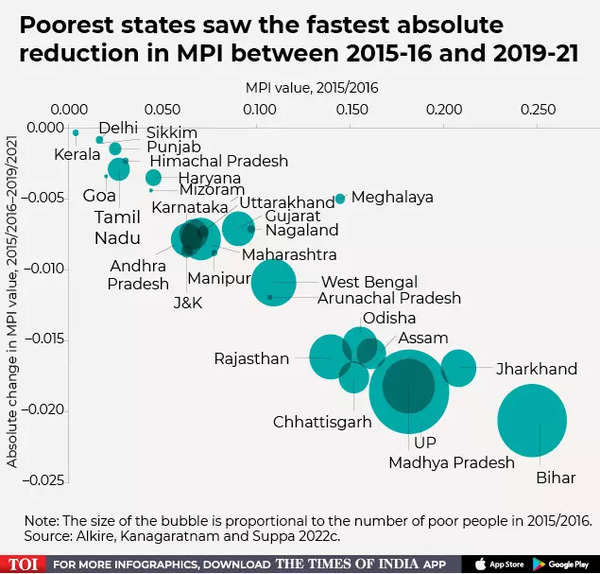
By Krishna Jha
There is a chink opening up in the claim that India has been ushered in the group of five most developed nations in the world. With consistent fall in the GDP, even an indication towards upward move gets clapping, a myth that is carried forward since last almost a decade. It is a myth since it does not have roots in the reality. Since 2011-12, the statistical agencies in the country have been silenced by the government that came to power in 2014. The World Bank had earlier clarified drawing a line to define extreme poverty according to data collected in a survey, and stated that it is 1.5 dollar per day, per person. In India, shockingly, 23 percent of population live with even less than it. It has been the only available data since 2011-12.
The absolute lack of official data on poverty has led to imaginative poverty line, now branded as hypothetical, drawn from various sources, calculations and assumptions. There is absolute lack of confirmation on any available data. The national survey results, when compared with the present unconfirmed sources working discreetly, come out with huge differences making any convergence of observations impossible. The finality keeps eluding. The issue has been that official data has not been allowed to see the light. The government has stopped publication of the results of National Sample Survey or Consumer Expenditure Survey since 2017-18. The unofficial sources have presented an extremely grim status report and that could be assumed as the cause behind the absence of any debate on poverty data especially when the 2024 elections are at the door step.
It is time to assess the rate of Government performance especially at the level of economy. Since concerned data is not available through approved sources, and economic indicators lack clarity, there is possibility of getting the estimation through headcount as well as about the rate of spending by people. The World Bank has come out with its own indications based on the cut off line to decide the extreme poverty, but the fact is that it varies among nations. So far as the government of India is concerned, it favours the Tendulkar committee report which says that poverty was a fact of life for 22 per cent people living in 2011-12. In fact the great Indian poverty debate 2.0 was initiated at the very assumption that consumption at the rate of per person went up with the last available data that came out in 2011-12. It was assessed on the basis of national accounts consumption rate.
The data was attacked all over the world since no one believed it. Estimate India had ‘eliminated’ extreme poverty line of 1.90 dollar and it was even before pandemic started. The World Bank had used the data from the Consumer Pyramid Household Survey (CPHS). It was from Centre for Monitoring Indian Economy. The representation of the poor that it gave had been questioned several times. Then there was the assumption that poverty had gone down in 2011-2012 and again in 2019-20, which was assessed at the rate of 10 percent. It was never taken seriously.
In fact the World Bank had taken the data from private sources, one among them was New Poverty Web Site. In fact a paper was presented at Columbia University which is yet to arrive in the public domain that said that even Pandemic did not arrest the decline. It was in contradiction even to the findings of CPHS. The paper was written with the help of a different set of data, from India’s periodic Labour Force Survey, published by India’s National Statistics office. It had no link with either the World Bank poverty data or the International Monetary Fund. However the conclusions of the paper are not connected with the decline of poverty in the country. Usually the decline in poverty is linked with either the poverty headcounts or the other pointers like better wages or growth in the productivity
Both are unlikely to take place. The other aspect is agriculture, and its share has been falling with the growth of industrialisation. Its contribution to GDP remained the same from 1990s to 2004, at 16 to 17 percent. The total agricultural force has also declined from 50 percent to 43 percent. The contribution to GDP has been highest among the South Asian countries like Bangladesh, China etc. It may be taken up here that while maintaining the decline issue of poverty, there is also the other narrative about systemic growth of poverty which is based on official and national estimates.
While the source of data on reduction of poverty is always operating from back stage, the steps to improve the living standards are also taken more as an imposition than relief. It explicitly came to the fore when the collection of Hunger data was taken up. The source had to face retribution when India was placed even below Afghanistan. Despite the rancour about the ranking, there was no flaw so far as data collection was concerned. It was collected from Food and Agricultural Organisations (FAO) that provided headcount. According to available data, since 2019-21, there was no visible improvement reported. It stuck to 16 percent all the while. The great poverty debate about our country was started with calculations that in fact were coming to light since last year. The formulation tried to say that India had got rid of poverty even before Pandemic. (IPA Service)
The post India Is Still Having The Largest Number Of Poor In Any Country Of The World first appeared on IPA Newspack.


